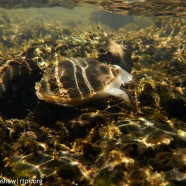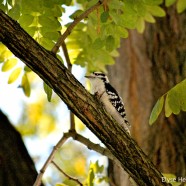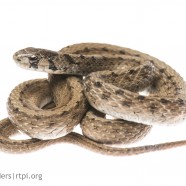Freshwater Mussels
Is it just me, or does it seem this mussel is sticking it’s tongue out at us? Interestingly, mussels don’t have tongues at all! The white, fleshy protrusion you see is actually referred to as the mussel’s foot. While we often don’t witness mussels moving, as they do it very slowly, this is exactly what this one is attempting to do. Mussels will use their muscular foot to inch themselves across a stream or river bed when they feel they are in danger or need to find a more suitable area to settle. Once in place, a freshwater mussel will often bury itself into the...
Read MoreDowny Woodpecker (Picoides pubescens)
Downy Woodpeckers (Picoides pubescens) are a common sight in the region and can typically be seen hammering away at the bark of a tree, attempting to uncover a nice juicy larval insect. These woodpeckers aren’t terribly picky, and have recently been found to munch down Emerald Ash Borer (EAB) larvae, an invasive species of beetle attacking ash trees. As EAB has spread throughout several states, scientists have been seeing rising population numbers as a result of increased food resources in at least four bird species, including the downy woodpecker. While woodpeckers may have some...
Read MoreDon’t Kill the Snakes!
The word “snake” often elicits a variety of responses in people ranging anywhere from, “Ewww! I’m afraid of snakes” to “Snakes are such beautiful animals.” Snakes, whether they be venomous or non, are often persecuted and deemed as evil creatures by our culture and associated folklore, as they don’t exactly give people the warm and fuzzys. Every year, thousands of snakes are killed due to habitat loss, disease or direct killing of individuals by humans that simply fear or misunderstand them. However, snakes are incredibly beneficial to humans,...
Read More






